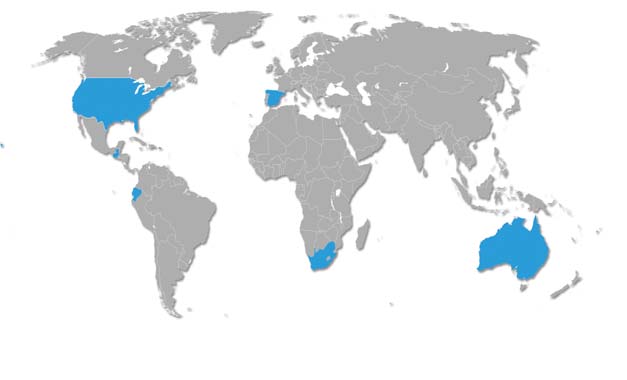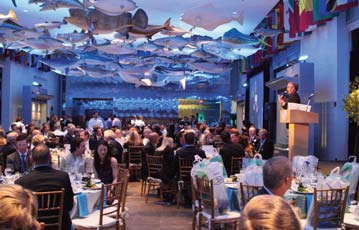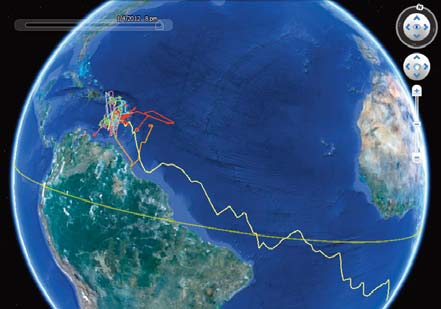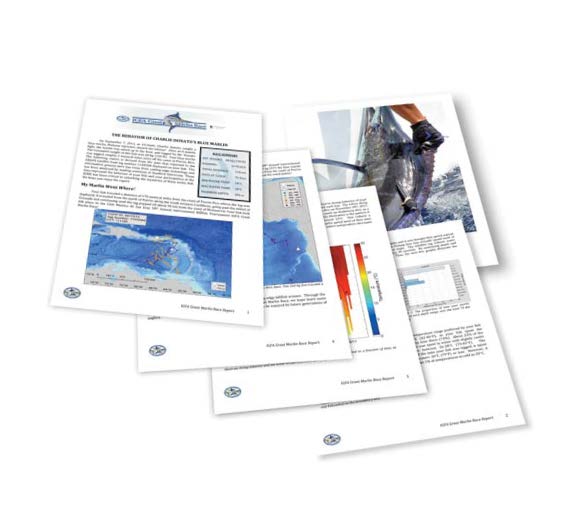What is the IGMR | Bisbee's Eastern Pacific Division?

This map illustrates marlin races that are currently ongoing, planned or have finished. IGMR has a goal of deploying at least 50 tags each year on marlin around the world.
The IGFA Great Marlin Race (IGMR) Eastern Pacific Division is a partnership
between IGFA, Stanford University, and Bisbee's Fish and Wildlife Conservation Fund that pairs
recreational anglers with cutting‐edge science to learn
more about the basic biology of marlin and how they
utilize the open ocean habitat. The goal of the program
is to deploy 50 pop‐up satellite archival tags
(PSATs) each year in marlin at billfish tournaments
around the world each year. This effort is improving
our understanding of distribution, population structure
and biology of marlin while engaging anglers and
the general public in the research process. By learning
how these animals use the pelagic ecosystem, we are
providing valuable information to the resource managers
and policy makers responsible for ensuring their
long‐term conservation. Tag data reporting from several ocean basins simultaneously gives us better understanding of billfish
migratory behaviors to identify oceanographic features which shape the connectivity of populations across the globe. This information
will be freely accessed by scientists and managers around the world to better protect billfish.
How does the IGMR work?

Pop‐up Satellite Archival Tags (PSATs) are at liberty for 180 days.
They report to the ARGOS satellite which transmit data to scientists at Stanford University.
The concept behind the IGMR is simple.
Before, during and after fishing tournaments, angling teams are invited to sponsor PSATs, at the price of $5,000 USD each, to be deployed on fish caught and released during the event.
One hundred and eighty days after each tag is deployed, it automatically releases itself from the fish and transmits information to earth‐orbiting ARGOS satellites.
The tag that surfaces furthest from its deployment site wins the race for that tournament.
What if my marlin travels the farthest?

The overall winner of the IGMR will be recognized at the annual IGFA International Auction & Banquet.
The individual team whose single marlin travels the farthest will receive a trophy and a free satellite tag at the following
year’s event. The team that sponsors and deploys three tags—The Triple Deploy—whose marlin collectively travel the farthest
will receive a free entry for the following year’s Bisbee’s Black and Blue Marlin Tournament.
Can I see the data?

Marlin tracks from the Bisbee's IGFA Great Marlin Race can be viewed online.
Tag sponsors, anglers and the general public can view the fish tracks of tagged marlin online
through a Google Earth‐enabled map. In addition, all tag data such as the fish’s path, depth profiles, and sea temperatures are freely available
to scientists and fisheries managers via an open access data sharing system.
What do the data tell us?
The data generated from each tag includes time, date, water temperature, latitude and longitude, and pressure,
from which scientists calculate depth. From each tag, scientists can generate figures showing the tracks of each fish
(Figure 1), the proportion of time it spends at a certain temperature or depth (Figure 2) and certain environmental
preferences and interesting observations in fish behavior (like diving behavior). For example, Figure 3 shows the
tagged fish tagged a very deep dive well below the thermocline into waters less than 15oC. Data like these identify
patterns in habitat use and allow scientists to draw conclusions about why marlin behave in a certain manner.
Data yielded from the IGMR was featured last year in IGFA’s testimony to the United States Congress which ultimately
led to the passage of the Billfish Conservation Act that now bans the importation of marlin, sailfish, and
spearfish into the United States. It is our hope that continuing this project in the years to come will lead to similar
conservation measures for billfish internationally, so they may be enjoyed by future generations of anglers.
Where does my money go?

Of the $5,000 needed to sponsor a tag, $4,500 pays for the tag and data processing. $500 covers the associated programmatic costs of the IGFA Great Marlin Race and the promotional items for the anglers of the Bisbee’s Eastern Pacific Division.